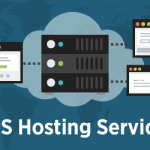Large language models (LLMs) are now an important endeavor in natural language processing (NLP), which allows machines to recognize and produce human-like texts with astonishing precision and coherence. Based on deep learning models, these models have revolutionized many NLP tasks, including text translation, text summarization, and even answering questions.
However, creating LLMs has different issues, ranging from the requirements for computational resources to the complexity of data preprocessing. Knowing and using the most effective tools to aid LLM development is crucial in this case. From software frameworks such as TensorFlow and PyTorch to specific hardware accelerators and data processing libraries, every tool plays an important part in creating and improving these models.
This guide provides the fundamental tools and techniques needed for large language model development. It offers information on the methods and best practices that fuel the advancement of NLP development and use.
Hardware Requirements for Scaling Up Language Models
The need to scale up language models to handle increasing amounts of data and complex architectures demands an efficient hardware infrastructure supporting high-end computational demands. Though competent in running LLM learning processes, traditional CPUs usually don’t have the parallel processing capabilities required to run efficient model training in large quantities. Therefore, hardware accelerators, such as Graphics Processing Units (GPUs) and Tensor Processing Units (TPUs), are now essential in creating large-scale language models.
Originally developed to render graphics, GPUs are extremely efficient at computational tasks that require a lot of parallel processing and are ideal for speeding up the development of deep neural networks, including LLMs. Their countless cores optimized to perform matrix-based operations dramatically cut down training time and enable researchers to explore larger datasets and models faster. Google-designed TPUs provide even more performance and speed in machine learning tasks and are equipped with specially designed hardware for computation in neural networks.
Alongside accelerators, the scalable computing infrastructure offered through cloud-based service providers like Amazon Web Services (AWS), Google Cloud Platform (GCP), and Microsoft Azure offers on-demand access to a vast array of computational resources to support LLM development. With the help of cloud-based infrastructure, researchers can expand their research, build larger models, and conduct multi-node training, speeding up the development rate in the natural processing of language.
Factors like budget limitations, computational requirements, and scalability requirements influence the selection of the right hardware configuration. By understanding the strengths and drawbacks of various hardware options, developers can enhance their infrastructure to efficiently support the creation and implementation of large language models.
Optimization Techniques for Improved Performance
Optimizing performance in big language models requires various strategies aimed at increasing training efficiency, reducing computational costs, and enhancing model generalization. A key strategy is using gradient descent optimization algorithms. These algorithms continuously update model parameters by varying the gradient of loss functions relative to these parameters. Variants like Adam, RMSProp, and Adagrad can adjust the learning rate and momentum parameters to speed up the convergence process and enhance stability.
Another important optimization method is regularization, which seeks to avoid overfitting and enhance model generalization by penalizing models that are too complicated or have high parameters. Methods like L1 and regularization, dropout, and weight decay prevent models from storing noisy data from training and help develop robust techniques.
Additionally, techniques for model distillation allow the transfer of information from a complex, large student model of a teacher to a less complex and better-performing student model. Educating the model of the student to replicate the behavior of the model of teacher distillation decreases the size of the model as well as inference latency. Still, it does not reduce performance in any way.
Evaluation Metrics for Assessing Model Quality
Evaluation of the quality and effectiveness of large-scale language model solutions requires using suitable measurement metrics that can capture different aspects of model behavior, such as accuracy, fluency, robustness, coherence, and. Common metrics for evaluating task-based natural language processing are complexity, BLEU (Bilingual Evaluation Understudy), ROUGE (Recall-Oriented Understudy for Gisting Evaluation), and F1 scores.
Perplexity is a popular measurement of language model performance. It measures the level of uncertainty or surprise of the model in predicting the next word in an order. Lower perplexity scores indicate higher model performance because the model is more successful in predicting the word to come in the context.
BLEU and ROUGE comprise two evaluation measures that are commonly utilized in text summarization and machine translation tasks for text summarization and machine translation, respectively. BLEU examines the degree of interplay between generated translations and references. In contrast, ROUGE analyzes the relationship between generated and reference summaries, offering insights into the quality and accuracy of the generated text.
F1 score is a measure commonly used in classification tasks to measure the accuracy and reliability of predictions from models. For tasks such as name entity recognition or sentiment analysis, F1 score is a complete measure of performance that considers false positives as well as false negatives.
Beyond the specific metrics for each task, Human evaluation is vital in evaluating the quality of models from a subjective perspective, including coherence, readability, and relevance. Human annotators provide useful information about the linguistic naturalness and fluency of the generated text, in addition to automatic evaluation measures.
Through automated metrics and human-based evaluation, researchers and practitioners will gain complete knowledge of models’ performance and make educated decisions regarding modeling selection, fine-tuning, and application in real-world scenarios.
Fine-Tuning and Transfer Learning Strategies
Transfer learning and fine-tuning strategies have been instrumental in creating large language models. These models allow researchers to use trained models and then modify them for specific domains or tasks with limited labeled data. Pre-trained models such as BERT, GPT, and RoBERTa are based on huge quantities of text and can capture rich representations of linguistics, making them ideal beginning points for many NLP tasks.
Fine-tuning is establishing variables of a trained model using weights learned from a vast corpus of data and then fine-tuning the model based on specific task-specific data using additional training repetitions. By-tuning updates the model’s parameters using loss functions specific to the task, such as welfare tunes. This permits the model to adjust to the particulars and nuances of the task at hand, resulting in improved efficiency and generalization.
Transfer learning extends the idea of fine-tuning by transferring the knowledge gained in one area to a similar task. Instead of creating distinct models for each task, transfer learning lets you reuse pre-trained representations across different tasks, allowing for quicker convergence and greater generalization, particularly in situations with limited data labels.
In addition to fine-tuning and transfer learning, methods like domain adaption and multi-tasking offer additional options for using pre-trained models in specific situations. Domain adaptation seeks to modify an already-trained model to work optimally in a specific field or application by fine-tuning the data of a specific domain, and multi-task learning allows the joint training of multiple tasks by leveraging shared representations to boost overall performance.
Utilizing the fine-tuning of transfer learning strategies and refinement efficiently, developers can benefit from the knowledge stored in pre-trained models to speed up the development of high-performance language comprehension systems for various domains and applications.
Handling Long Sequences and Memory Management
Large-scale language models typically have difficulty processing large texts because of memory and computation limitations. When input sequences expand in length, neural networks such as transformers’ memory requirements grow exponentially, making it difficult to build and deploy models capable of effectively managing dependencies across long ranges.
To overcome these problems, Researchers have devised a variety of methods for dealing with long sequences and effectively managing memory during training and inference. One option is to use hierarchical structures that break down input sequences into smaller pieces or chunks. This allows models to handle them gradually and combine information across various levels of resolution. Attention mechanisms with hierarchical structure and memory-efficient attention versions allow transformers to concentrate on the most relevant input areas while minimizing computational burden.
Another approach is to utilize techniques that use sparse attention to focus on relevant tokens within an extended sequence while delaying remote or irrelevant tokens. Techniques like sparse attention, local attention, and kernelized attention help models ensure performance and scale in processing large sequences while reducing the footprint of memory and inference time.
Additionally, model parallelism and distributed training techniques allow for the processing of large sequences across multiple devices or processing units, allowing efficient use of hardware resources and speeding up learning times. By splitting the model parameters and spreading computations across various computation nodes, researchers can efficiently create large-scale language models using large datasets and handle lengthy sequences.
The Key Takeaway
In the end, Large Language Model solutions are an important milestone in natural language processing, providing unprecedented capabilities in understanding, creating, and manipulating human language. Exploring essential methods and tools for large-scale language model development has revealed that a mix of hardware and software infrastructure, data processing, model architecture, and training strategies plays an important influence on the effectiveness and scalability of these models.
Using the most advanced methods and tools, researchers can overcome obstacles like computation complexity, data scarcity, and memory constraints to construct effective and robust systems for understanding languages.
In the future, continual technological advancements in tools, techniques, and technological advancements will continue to boost the rate of development in large modeling of languages, allowing opportunities to tackle difficult language understanding challenges and enabling transformative applications across different areas.


